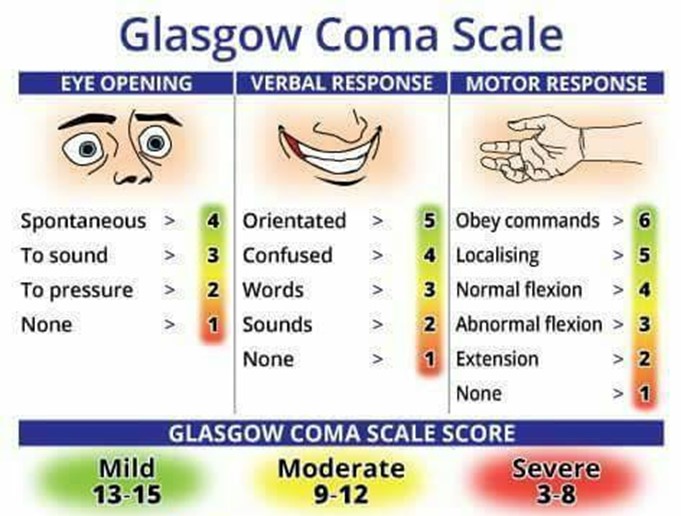A nurse in an ophthalmology clinic is interviewing a client who was referred by his primary care provider for suspicion of cataracts. Which of the following findings is consistent with manifestations of cataracts?
Loss of peripheral vision
A decreased ability to perceive colors
Loss of central vision
Seeing bright flashes of light and floaters
The Correct Answer is B
Choice A reason: This is incorrect because loss of peripheral vision is not a manifestation of cataracts, but of glaucoma. Glaucoma is a condition that causes increased pressure inside the eye and damage to the optic nerve, which can lead to loss of vision in the outer edges of the visual field. The nurse should assess the client's intraocular pressure and visual field test results to rule out glaucoma.
Choice B reason: This is correct because a decreased ability to perceive colors is a manifestation of cataracts. Cataracts are a condition that causes clouding or opacity of the lens, which is the transparent structure behind the pupil that focuses light onto the retina. Cataracts can reduce the clarity and contrast of vision and make colors appear faded or yellowish. The nurse should ask the client about any changes in color perception or brightness of objects.
Choice C reason: This is incorrect because loss of central vision is not a manifestation of cataracts but of macular degeneration. Macular degeneration is a condition that affects the macula, which is the central part of the retina that is responsible for sharp and detailed vision. Macular degeneration can cause blurred or distorted central vision, difficulty reading or recognizing faces, or dark spots in the visual field. The nurse should assess the client's visual acuity and fundoscopic examination results to rule out macular degeneration.
Choice D reason: This is incorrect because seeing bright flashes of light and floaters is not a manifestation of cataracts but of retinal detachment. Retinal detachment is a condition that occurs when the retina, which is the layer of tissue at the back of the eye that converts light into nerve impulses, separates from its underlying support tissue. Retinal detachment can cause sudden flashes of light, floaters, or shadows in the visual field. The nurse should refer the client to an ophthalmologist immediately if retinal detachment is suspected.
Nursing Test Bank
Naxlex Comprehensive Predictor Exams
Related Questions
Correct Answer is D
Explanation
Choice A reason: This is incorrect because administering IV ketorolac is not a priority intervention for a client with cholecystitis. Ketorolac is a nonsteroidal anti-inflammatory drug (NSAID) that can cause gastrointestinal bleeding and kidney damage, which are contraindicated in cholecystitis. The nurse should administer analgesics as prescribed, but only after assessing the pain level and severity.
Choice B reason: This is incorrect because reporting findings to healthcare provider is not a priority intervention for a client with cholecystitis. The nurse should communicate with the healthcare provider about the client's condition and treatment plan, but only after assessing the pain level and other vital signs.
Choice C reason: This is incorrect because offering a high-calorie, high-fat meal is not an intervention for a client with cholecystitis, but a potential trigger. High-fat foods can stimulate the gallbladder to contract and cause more pain and inflammation. The nurse should advise the client to avoid fatty foods and follow a low-fat diet.
Choice D reason: This is the correct answer because assessing the pain level is a priority intervention for a client with cholecystitis. Pain is the most common symptom of cholecystitis and can indicate the severity and complications of the condition. The nurse should assess the pain level using a numeric or descriptive scale, and monitor for changes in location, intensity, and duration.
Correct Answer is B
Explanation
Choice A reason: This is incorrect because preparing the client for an X-ray is not the first action that the nurse should take. An X-ray can help diagnose possible injuries or fractures, but it is not an urgent test. The nurse should first assess the client's level of consciousness and neurological status using a standardized tool such as the Glasgow Coma Scale.
Choice B reason: This is the correct answer because calculating a Glasgow Coma Score is the first action that the nurse should take. The Glasgow Coma Scale is a tool that measures the level of consciousness based on the eye-opening, verbal response, and motor responses. It can help determine the severity of brain injury and guide further interventions.
Choice C reason: This is incorrect because dimming the lights and turning off the TV are not the first actions that the nurse should take. These are environmental modifications that can help reduce sensory stimulation and prevent agitation or seizures, but they are not as important as assessing the level of consciousness and neurological status.
Choice D reason: This is incorrect because providing analgesics is not the first action that the nurse should take. Analgesics can help relieve pain and discomfort, but they can also alter the level of consciousness and mask neurological signs. The nurse should first assess the level of consciousness and neurological status, and then administer analgesics as prescribed.

Whether you are a student looking to ace your exams or a practicing nurse seeking to enhance your expertise , our nursing education contents will empower you with the confidence and competence to make a difference in the lives of patients and become a respected leader in the healthcare field.
Visit Naxlex, invest in your future and unlock endless possibilities with our unparalleled nursing education contents today
Report Wrong Answer on the Current Question
Do you disagree with the answer? If yes, what is your expected answer? Explain.
Kindly be descriptive with the issue you are facing.
